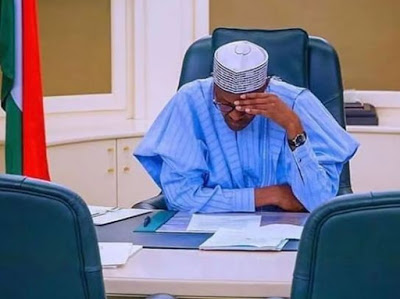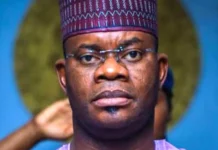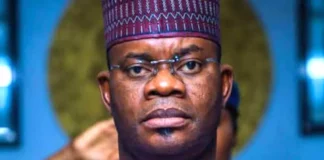Under the Buhari administration, the economy has experienced rising food inflation and currency inflation which have seen Nigeria’s GDP per capita fall to the level it was 40 years ago. These stood as the major propeller of misery.
Every May 29, Nigeria remembers the beginning of the end of decades of military rule and the start of democracy. Nigeria, Africa’s largest economy is now in its 22nd year of uninterrupted democracy, the longest since the country was created in 1960.
To many, democracy was long sought as the best model of governance that can lead Nigeria into political stability, respect for the rule of law and economic prosperity. While there has been political stability and just above average respect for the rule of law, economic prosperity appears to have eluded the country in the last 22 years.
Several macro-economic indicators provide a solid reference to gauging how the economy has performed throughout the last 22 years that have seen the country vote for 4 democratically elected presidents. GDP Growth rate, inflation rate, lending rates, population growth rate, unemployment rate, etc., are examples of macroeconomic indicators used by economist to ascertain how countries have performed. More importantly, is how these indicators have impacted the standard of living of Nigerians.
However, a more reliable metric is the misery index which combines all of the macroeconomic indicators mentioned above. It accounts for insufficient jobs, expensive access to funds as a result of high lending rate, increase in the price of goods and services, and the reduction in consumption due to low growth rate. These are the main features that make up the core concepts that are measurable with regards to the misery index.
Furthermore, the 22-year democratic average GDP growth rate is 5.1%, in the last five years (2015-2020), the average economic growth rate was 0.68%, which is much below the average population growth rate of around 2.5% per year since 1999. There is increasing Misery as a result of this growing tendency for the population. In the fourth quarter of 2020, the unemployment rate grew to 33.3%, up from 3.79% in 1999.
According to the data, the misery index of Nigerians has been on a steady increase. Consequently, it would be judicious to examine each administration’s contribution to the misery level of Nigerians despite their campaign promises.
Misery contribution by political administration since the fourth republic
Using data gathered from Nairalytics, the research arm of Nairametrics, Nigeria’s misery index was the least (comparative to other presidents after him) during the 8 years presidency of Olusegun Obasanjo between 1999 and 2007, and the misery level has worsened under President Muhamadu Buhari from 2016 to date.
The price of crude oil, Nigeria’s largest source of revenue, was high (averaging $91 per barrel) during the Jonathan administration but dropped significantly in Buhari’s tenure falling as low as $30 per barrel shortly after Mr Buhari took office. This has contributed in no small way to the lack-lustre performance of the economy under his leadership.
Olusegun Obasanjo, 1999 – 2007
According to data from Nairalytics, under Olusegun Obasanjo, Nigeria’s first democratically elected president since the return to democracy, economic misery stood at 29.8 index points in his first year of presidency. The major propeller of the misery index was high lending rate of 20%, low growth of 0.58% and inflation of 6.6%. In his final year as president (2007), the misery index had fallen to 18.39, GDP growth was 6.59% and inflation and lending rate were down to 5.38% and 16% respectively. Obasanjo’s presidency averaged a GDP growth rate of 6.95% during his 8 years in office, he also kept unemployment low at 3.6% from 3.8% in 1999.
During Obasanjo’s presidency, Nigeria experienced a relatively secure economy, with private sector reforms in telecoms, banking, and pension administration. His government also laid a formidable foundation for other market reforms carried out by subsequent Nigerian presidents.
Umaru Musa Yar’Adua, 2008-2010
The late Umaru Musa Yar’Adua started office with a misery index score of 23.38 index point in 2008. Economic growth in 2008 was 6.76%. In 2010, it hit a peak of 9.13%, averaging 7.98% for Yar’Adua’s short time in office.
Although his presidency was characterized by rapid growth, he was unable to reduce the misery level of Nigeria. His administration was plagued with double digit inflation and an increase in lending rate which increased the misery score to 26.92.
During Yar’Adua’s administration, the country saw a significant commodities boom, a financial market meltdown in 2008 that largely spared Nigeria, and a reversal of the sale of NNPC refineries owing to a lack of sincerity in the process.
Goodluck Ebele Jonathan, 2011-2015
Following the death of his predecessor in 2010, Goodluck Ebele Jonathan took over as President and was re-elected in 2011. With a GDP growth rate of 5.30% and inflation of 10%, the misery index score at the start of his term was 25.26 points. The highest growth rate was 6.22% recorded in 2014. Nigeria’s average GDP growth rate was 4.80% under his leadership, from 2011 to 2015.
However, a fall in growth rate and the relatively high lending rate led to the misery score increase at the end of his tenor to 27.55 index point.
During his presidency, he oversaw the implementation of reforms such as fuel deregulation, which was hampered by the “#OccupyNigeria” protests, as well as the successful completion of the first phase of Nigeria’s reforms, which saw the deregulation of PHCN assets into today’s GenCos and DisCos (transmission is still in the hands of the Transmission Company of Nigeria, which distributes the power to DisCos nationally).
Muhammadu Buhari, 2016-2020
On the promise of “CHANGE,” Buhari’s administration secured his leadership by defeating the incumbent opposition party, a first-time occurrence in Nigeria’s democratic history. The misery score stood at 41.12 index points at the start of Buhari’s term.
Under the Buhari administration, the economy has experienced rising food inflation and currency inflation which have seen Nigeria’s GDP per capita fall to the level it was 40 years ago. These stood as the major propeller of misery.
The administration has fallen short of its promises for a variety of reasons, even though it has performed admirably in social welfare schemes implemented under the National Social Investment Program (NSIP). The National Home-Grown School Feeding Program (NHGSFP), the N-Power program, which aims to create jobs for 1 million beneficiaries, the GEEP program, which will provide loans to an additional 1 million traders, farmers, and market people, and the Social Register, which will accommodate an additional 1 million households, are among these programs. TRADERMONI, MARKETMONI, FARMERMONI, MSME Survival Fund, and N75 billion National Youth Investment Fund are among the others.
Currently, his presidency is characterized by a high unemployment rate of 33.3% (Q4 2020) which neutralizes the 0.51% GDP growth rate (Q1 2021), a high inflation rate of 18.17% (March 2021) and prime lending rate of 11.24% in April. These placed the misery score at 62.2 index point.
What this means
The figures show that Nigeria has experienced an increasing misery level since the fourth republic and the nation is facing its worst hardship under the current administration. However, while some might be quick to point to democracy as the problem, it is important to note that the happiest countries in the world still practice democracy.
In conclusion, the persistent insecurity issues, nationwide protest of #Endsars and most recently, the #twitterban are not doing any favour to the current administration in elevation of misery in the country. Hence, a more inclusive approach should be taken by the government to reverse the current downturn.
Culled from Nairametrics













